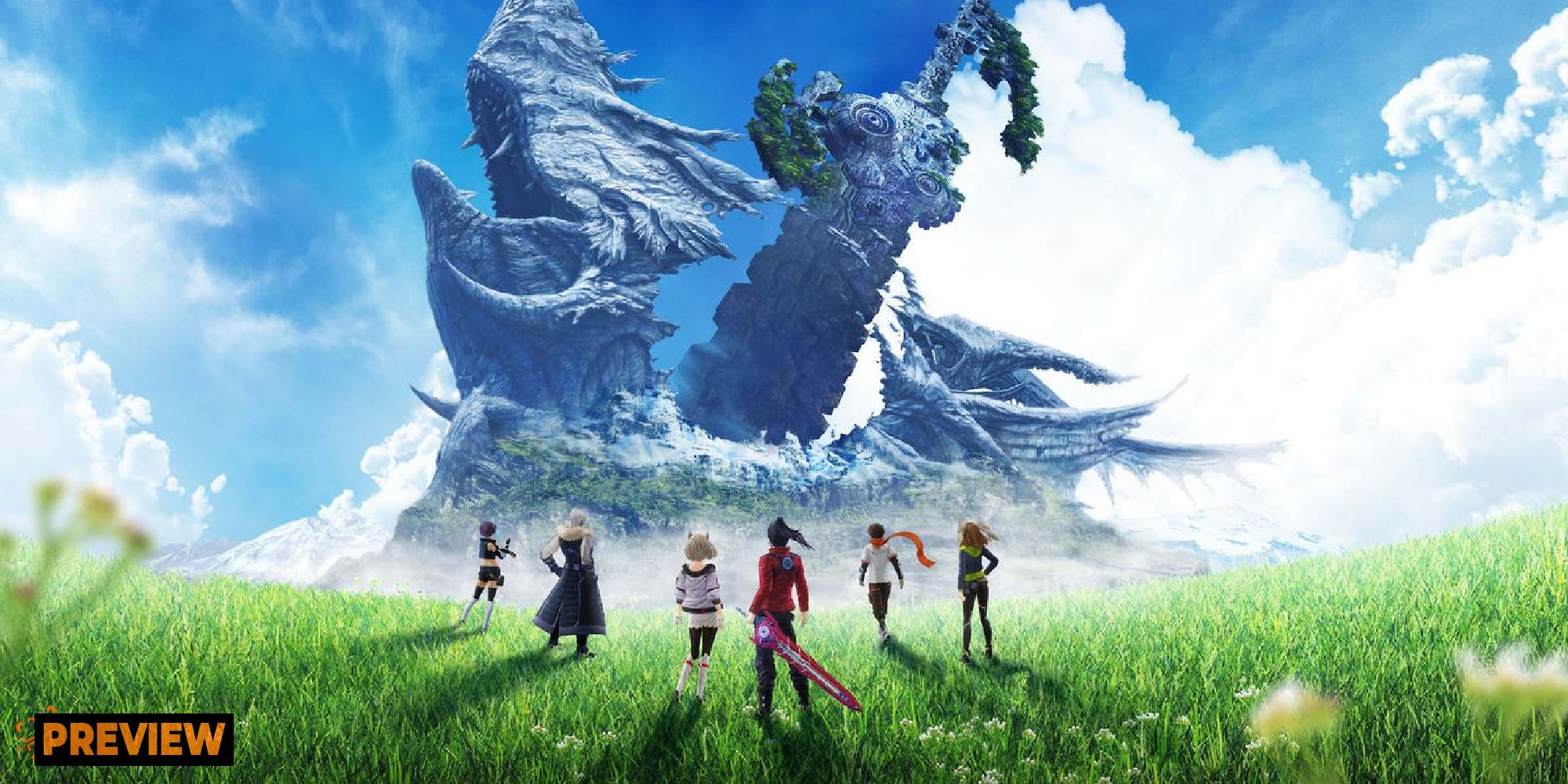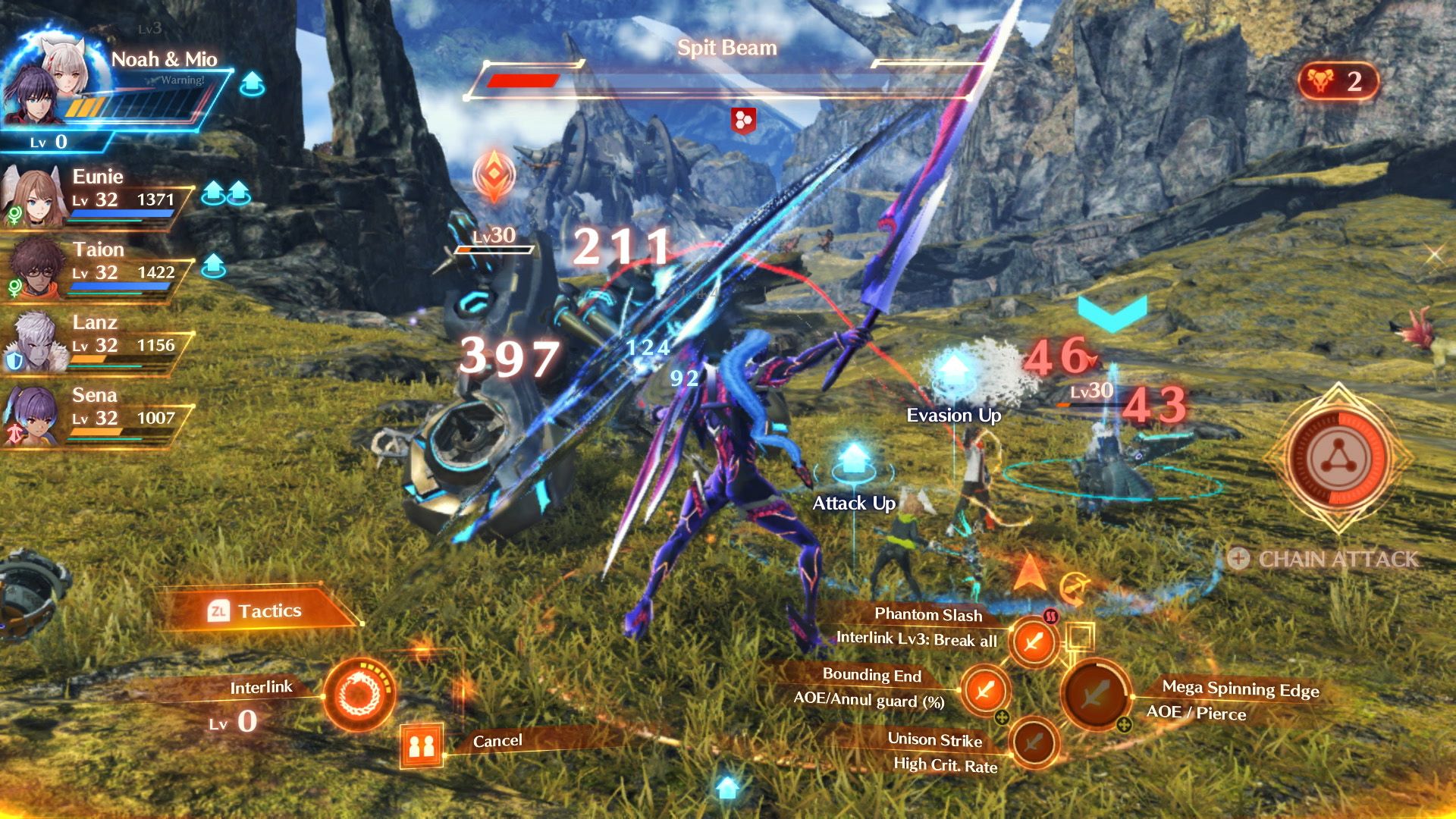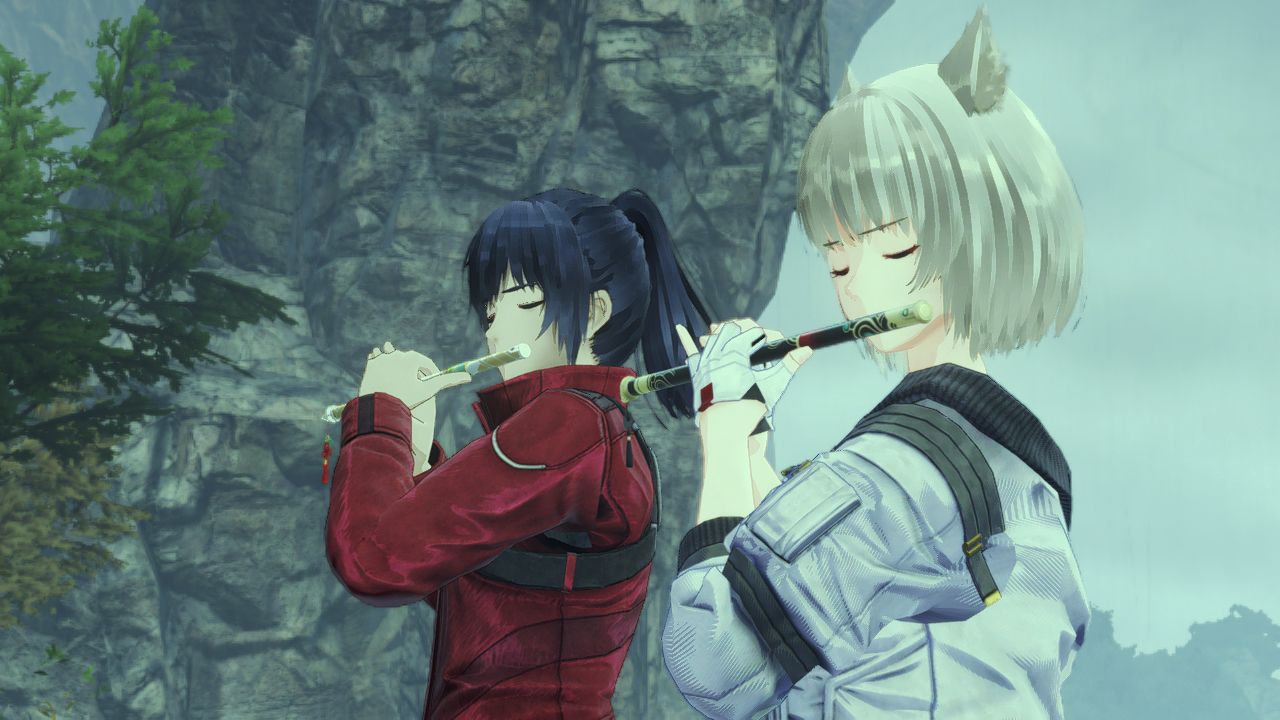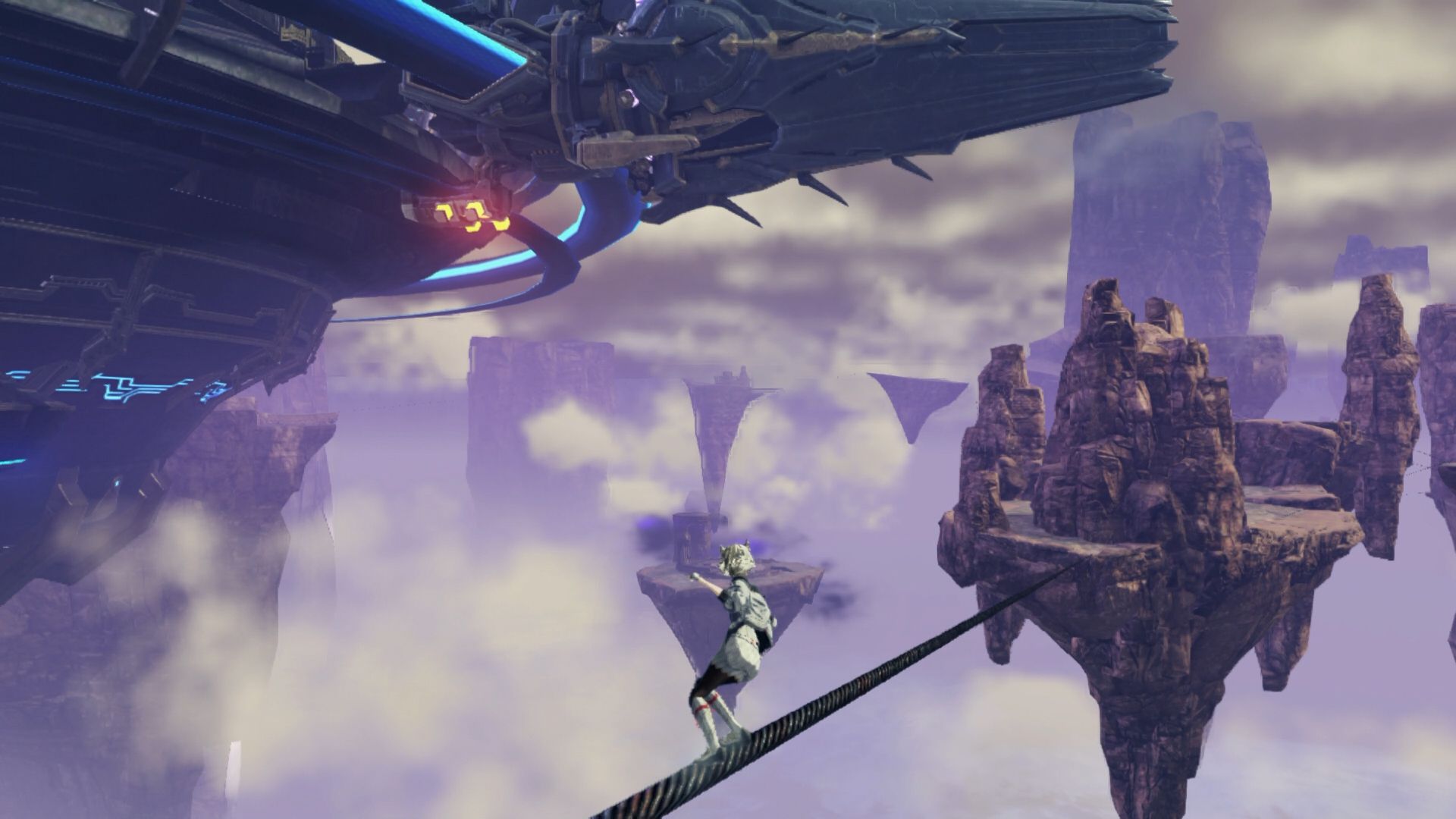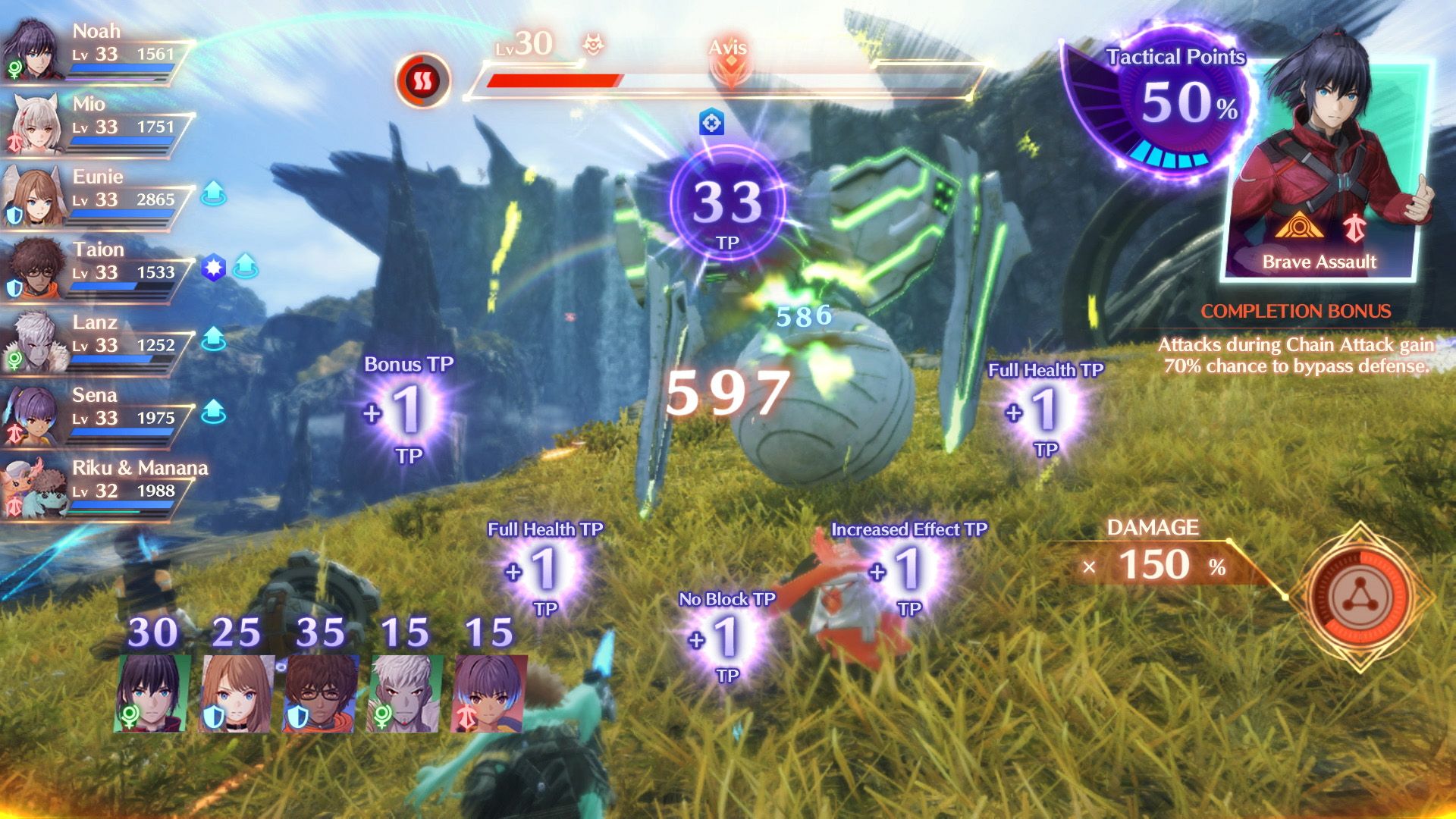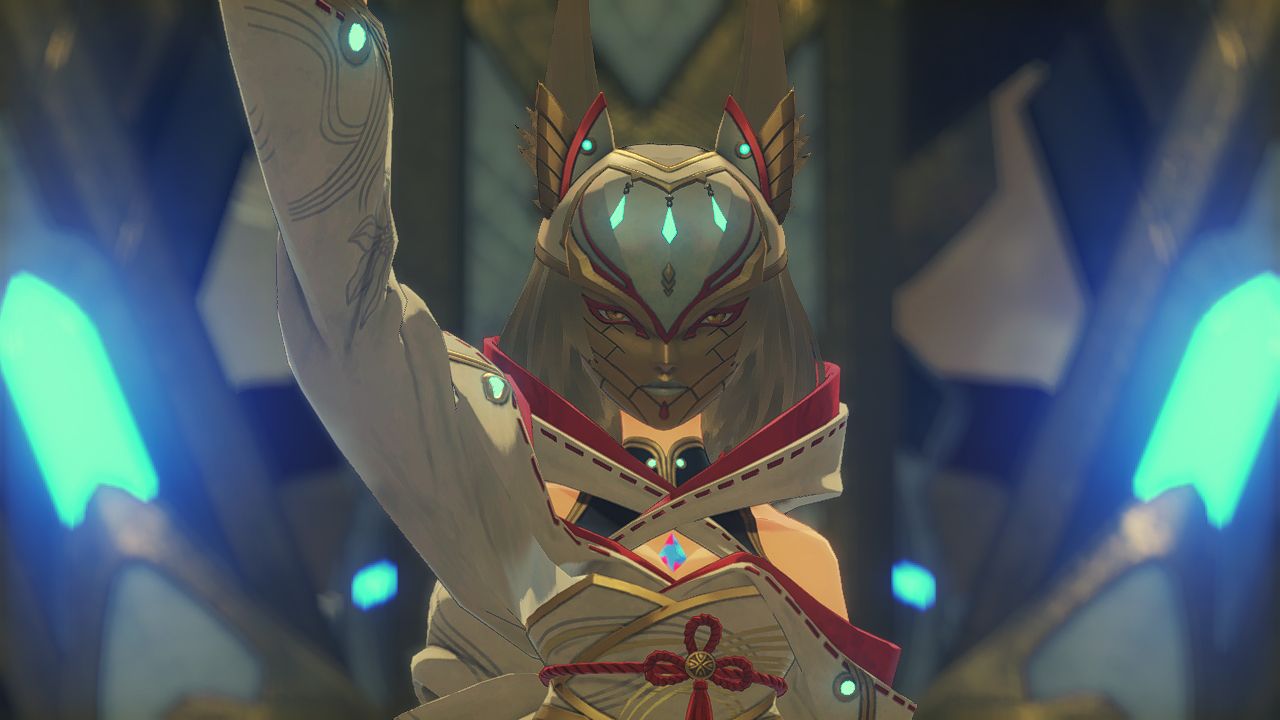Xenoblade Chronicles 3 is massive. That’s no real surprise - Monolith Soft’s beloved JRPG series has always traded on its colossal open worlds and ambitious tales of human triumph against insurmountable odds. The third entry once again follows a group of anime teenagers seeking to escape the sociopolitical systems they were born into in search of something better. They’ve been subject to habitual lies and endless wars for so long that things have to change, and within moments that narrative conceit is sold with tremendous effect.
I can only talk about the first couple of chapters right now, but this already feels like a profound evolution over past titles that finds an aesthetic middle ground between the first game’s more traditional fantasy and the sequel’s garish anime fanservice. The battle system is faster and more deliberate, while exploration is given much stronger precedence thanks to optional quests that actually matter. Xenoblade Chronicles 3 continues to push forward one of the most ambitious properties the genre has ever seen despite a few small shortcomings.
Aionios is a sprawling landmass home to a duo of distinct factions - Agnus and Keves - who are engaged in a perpetual conflict to gather energy resources that not only maintains their reliance on technology, but keeps soldiers on the battlefield alive. Real humans are a rarity in this world, with the majority of people born from twisted laboratories with a life cycle of ten short years. They emerge ready to train, eventually coming to fight in a conflict that serves a clouded yet greater purpose. People are born to fight, die, and repeat this arduous process because there is no way of overthrowing those above them. Good to know that Monolith Soft is staunchly anti-monarchist and wants to fight for the little guy.
Colonies across the continent are subject to Flame Clocks. These mechanisms adorn towering mechs and demand the war continues by any means necessary, otherwise energy reserves run dry and those dependent on it drop dead. It’s a knowingly dark premise, with the early hours of Xenoblade Chronicles 3 unafraid to confront existential humanism and the nature of an existence poised to fade away whether we’re prepared for it or not. Once someone reaches their tenth year, a homecoming is held that sees them ascend to a higher plane. In reality, they become little more than small sparks floating into the sky, ready to be replaced by someone just like them again and again until the world ceases to exist.
The main cast consists of child soldiers from both nations who find themselves becoming allies when the closing hours of a campaign go horribly wrong. A chance encounter with a human survivor - who fans of the series will definitely recognise - has our heroes gaining special powers and losing all affiliation with their homelands. Now they’re fugitives, and have no choice but to pursue those who rule above them in order to extend their lives and make the world a better place. Some only have months left and have no idea what altering their fate will bring, but it’s better to chase that possibility instead of accepting death.
Noah is our protagonist, an off-seer whose job is to play an instrument that sends the departed away to a better place. Whether this actually does anything remains unclear, but it’s a symbolic acknowledgement of loss in a world defined by its own fleeting nature. Mio has the same job, a cat girl from the rival faction with only three months left on her internal clock. She has both accepted death and understands there is a reason to keep fighting, if only to honour those who fell in her stead and to build a future that matters. Xenoblade Chronicles 3 has a fantastic ensemble of characters, bonding through shared experiences of trauma as they learn to abandon their once dystopian lives in favour of freedom, even if it means further sacrifices and having no way of knowing what lies ahead.
The overarching narrative is a tale of revolution, with more and more colonies coming to join our cause as the true nature of the ruling monarchy becomes clear. People come to realise that being born to fight is no way to exist, and learning to have fun, empathise, and fall in love are experiences that everyone deserves to have, even those whose very presence is determined by a constantly ticking clock. I want to delve into the game’s story so badly but that will have to wait, just know that those after an epic yet intimate tale of personal discovery will adore what Monolith Soft has done here, even if it does veer into cliched melodrama a little too often. But I feel those anime tropes kinda come with the territory.
As I mentioned earlier, Xenoblade Chronicles 3 is huge. The first chapter begins with our heroes tasked with returning home across a scorched battlefield. Debris and corpses litter the land, with Noah stopping to usher away his fallen comrades while doing battle with a selection of low-level monsters. I noticed immediately that the characters feel more alive this time around, with many of them making contextual comments on the environment or touching on my current objective in a way that feels a bit more natural. Canned voice lines are still awfully common, but compared to past entries the difference is monumental.
Combat itself does away with the gacha system from Xenoblade Chronicles 2 that depended on chance to pull playable heroes in a full-priced product. It sucked, and now what you see is pretty much what you get. The main party consists of six main characters, all of which have their own distinct class and can be switched between at any time in the midst of battle. Classes belong to three distinct groups - Attacker, Defender, and Healer - with a decent mixture of all of them required unless you want to end every battle in defeat.
Being able to switch between characters whenever you like is a game changer, and turns battles that were once rather timid affairs into faster, more energetic bouts that require better reactions and a deeper understanding of the battlefield. Much like previous games, the key to victory is building up combos by chaining together arts before executing an epic chain attack that can deal ludicrous amounts of damage. This pattern will see you through the majority of encounters, but you will also need to adopt new classes as they become unlocked to learn new abilities and keep things fresh.
While the gacha elements I mentioned earlier are nowhere to be seen, they are instead replaced by hero characters who act as a seventh party member that can’t be controlled or customised except for a small few factors. Many of these characters have quest lines similar to loyalty missions in Mass Effect, located off the beaten path and providing ample incentive to explore away from the main narrative. I’m forbidden from mentioning them explicitly until release, but it’s wonderful to see the otherwise forgettable side quests from previous games given purpose. There is so much to do in Xenoblade Chronicles 3, and most of it justifies its presence instead of hanging around as filler.
One of the coolest new combat mechanics is the Ouroboros. This ancient power is unlocked by our heroes as part of the narrative and allows them to manifest an emotional connection and combine bodies to become giant organic mechs with all manner of special moves and abilities. They’re absolutely badass, and are often used as specials in battle given how much damage you can dish out upon taking control. When Noah and Mio bond for the first time we see both of them witness snapshots of memories, delving into their inner subconscious and gaining a nuanced understanding of who the other person is and what makes them tick. It’s basically drifting from Pacific Rim but with extra anime, if that is even possible.
I can’t overstate how many quality of life improvements Xenoblade Chronicles 3 brings to the table. Instead of forcing the player to dig through gathering spots and watch a generic animation over and over again to earn resources, they are instead scattered naturally across the environment and can be picked up without pressing a button. Fast travel is more streamlined and character customisation is no longer a mixture of incomprehensible menus that feel determined to overcomplicate things. It all feels iterative and showcases how Monolith Soft has taken on fan feedback to create a game that feels better in every way.
However, I will say it still feels hamstrung by the Nintendo Switch. I have yet to receive the day-one patch, but the visual quality and performance during docked play is far from perfect. Drops are common, and sprawling vistas are often reduced to a blur when blown up on a 4K display. I understand the intention, with scale being favoured instead of framerate, and the cost is quite evident, but I can’t help but picture what this game would be like on the PS5 with absolutely no compromise in sight. Yet I learned to deal with its misgivings, and have already fallen in love with this world and its characters as I push forward to uncover whatever twists and turns await.
Xenoblade Chronicles 3 is everything I wanted it to be. It does away with the overly sexualised characters of the last game without abandoning its charming personality, seeking to deliver a narrative that is strong, emotional, and defined by an ensemble cast I can’t help but root for. The combat system is faster and more experimental, while exploration is given greater purpose through meaningful side quests and hero missions that justify the time required to see them through to the end. This momentum could dry up if the game ends up being too long and overstays its welcome, but I’m already 30+ hours in and ready for more.

